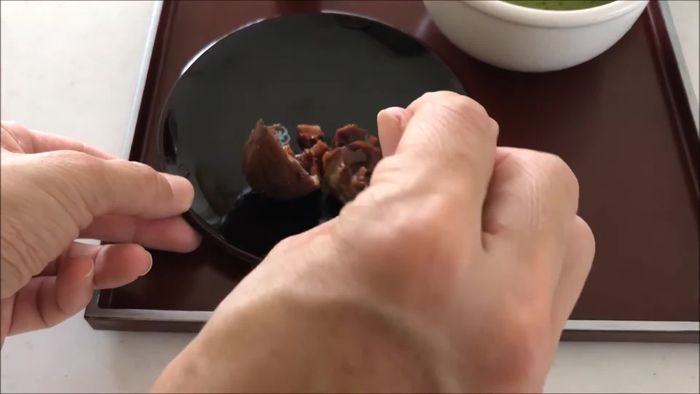Shibukawa-ni, or Japanese candied chestnuts, are a delightful treat, embodying the perfect balance of sweetness and subtle earthy notes. These glistening, jewel-like chestnuts are a cherished part of Japanese cuisine, often enjoyed as a seasonal snack or incorporated into elegant desserts. Their preparation is a testament to Japanese culinary artistry, transforming humble chestnuts into a refined delicacy with a captivating texture—chewy yet tender, subtly sweet yet not overly sugary. The lustrous, deep brown glaze is as enticing as the flavour within.
This traditional confection is surprisingly approachable, even for home cooks. While the process might seem involved, each step is clearly explained, ensuring a successful outcome. Ready to embark on this culinary journey and create your own batch of exquisite Shibukawa-ni? Let's delve into the detailed step-by-step process outlined below.
Tools Needed
- Large pot
- Peeling knife
- Bamboo skewer
- Sterilized jar
Ingredients
- Chestnuts
- Water: 2 liters
- Baking soda: 1 teaspoon
- Sugar: 1/3 of the total amount, added over 3 days
Step-by-Step Instructions
Step 1. Prepare the Chestnuts
- Bring 2 liters of water to a boil. Add 1 tsp of baking soda and washed chestnuts. Turn off the heat, cover, and let it sit until lukewarm (3-4 hours).
- Remove the hard outer shell of the chestnuts. Use a peeling knife to make a slit on the flat side and remove the shell little by little, being careful not to peel off the inner skin (shibukawa).
- Bring 2 liters of water to a boil, add chestnuts and 1 teaspoon of baking soda. Simmer for 5 minutes, then drain and rinse under running water.
- Clean the chestnut surface using a bamboo skewer to remove any remaining hairy skin. Be gentle to avoid damaging the inner skin.




Step 2. Boil and Soften Chestnuts
- Boil the chestnuts again with 1 teaspoon of baking soda for 5 minutes. This time, don't drain; slowly pour water into the pot to change the water completely. Leave for 7-8 minutes.
- Repeat the boiling process again, but without baking soda, to remove any bitterness from the baking soda.
- Cook the chestnuts in fresh water until soft (about 1 hour). Use a skewer to check; they should be easily pierced.



Step 3. Candy the Chestnuts
- Add 1/3 of the total sugar and cook to dissolve (about 5 minutes). Let it sit overnight.
- Repeat steps 8-9 for the next two days, adding another 1/3 of the sugar each day.


Step 4. Final Steps & Storage
- On the fourth day, separate the chestnuts and syrup. Boil the syrup for 10 minutes to reduce water and increase sugar concentration. Return chestnuts to the syrup and let it sit overnight.
- Repeat step 10 for the fifth and final day.
- Transfer the chestnuts to sterilized jars and store in the refrigerator. Optionally, add rum for preservation and flavor.



Read more: Kinpira Gobo Recipe: A Sweet & Savory Japanese Side Dish
Tips
- Baking soda softens the outer and inner shells.
- The inner skin (shibukawa) is crucial for flavor and texture. Handle with care during peeling and cleaning.
- The process takes approximately 9 hours, excluding overnight rests. Plan accordingly.
- The final boiling without baking soda removes any lingering bitterness.
Nutrition
- Calories: variable
- Fat: variableg
- Carbs: variableg
- Protein: variableg
FAQs
1. Can I use frozen chestnuts for Shibukawa-ni?
While fresh chestnuts are ideal, you can use frozen ones. Just ensure they are completely thawed and thoroughly dried before starting the candying process.
2. How long do candied chestnuts last?
Properly stored in an airtight container in the refrigerator, your Shibukawa-ni should last for about a week. They can also be frozen for longer storage.
Making Shibukawa-ni is a rewarding experience, transforming simple chestnuts into a sophisticated and delicious treat. The effort is well worth the result, yielding a confection that's perfect for gifting or enjoying as a special indulgence. Now go forth and create your own batch of these delightful Japanese candied chestnuts!
